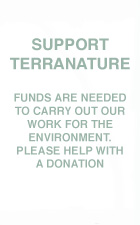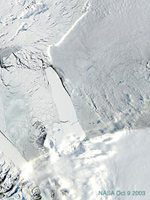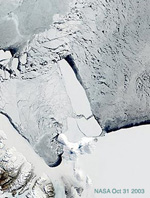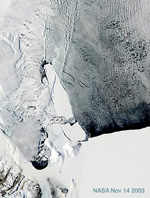 |
 |
 |
 |
 |
 |
 |
 |
 |
 |
|
|
|
 |
||||||||||||||
|
Now it is up to the world's political leaders to deliver more than hot airThe Independent, 3 February 2007The latest report from the United Nations Intergovernmental Panel on Climate Change (IPCC), unveiled in Paris yesterday, is humanity's loudest warning yet of the catastrophe that is threatening to overtake us. The report makes the link between human behaviour and global warming explicit, and spells out the consequences in stark detail.
The tone of the report is significantly bleaker than in 2001. It says a rise in temperature is now irreversible. A lag in the global climate system means that average temperatures will continue to rise by 0.1°C a decade, even if all sources of emissions were frozen today. The IPCC report also identifies various "positive feedback" effects such as forests, oceans and the soil becoming less able to absorb carbon dioxide. The ground underneath the climate change "sceptics" has disappeared. All conclusions based on scientific evidence are provisional. But this report is about as close to certainty as any scientific model is likely to get. Even the US, which has long played up the uncertainties of climate change science, has begrudgingly signed up to its conclusions. Reports from the IPCC due later this year will analyse the impact of climate change in further detail. But we already know well enough what this will be. |
|||||||||||||
Unless we reduce greenhouse gas emissions, we will face a world of resurgent disease, famine and drought. Water supplies will dry out; agriculture will fail; entire ecosystems will collapse and millions of environmental refugees will be created. War and geopolitical collapse are likely to follow. We also know what needs to be done. There must be a global treaty on reducing emissions that will put a high price on carbon emissions and it must be enforced through taxation and fines. The problem is not one of information, but action. Not enough is being done. Negotiations on a successor to the Kyoto protocol have stalled. Much has been made of President Bush's recent State of the Union speech in which he acknowledged the threat of climate change. But the culture of denial still persists in the United States. It has come to light that one of the world's largest oil companies, Exxon Mobil, is attempting to bribe scientists to pick holes in the IPCC's assessment. And even President Bush's admission is not what it seems. The solutions he has touted do not include a new global treaty, suggesting a lingering refusal to accept that global greenhouse gas emissions will be reduced only when the world reduces its fuel consumption. When pressed to introduce radical measures, the politicians of the developed world usually argue that they can push their electorates only so far; that the pace of change is ultimately dictated by the public. But how true is this? In the UK, householders succeeded in cutting their carbon emissions by 4.6 percent in 2005. But carbon emissions still rose overall, thanks mainly to increased aircraft emissions. This suggests that while the public is prepared for tough measures, our government is lagging behind. This pattern is being replicated abroad. It is remarkable how many businesses are responding to public concerns over climate change by "going green". Even a company as rapacious as Wal-Mart recognises that its customers want action. Lee Scott, the retailer's chief executive, announced this week that "we see sustainability as mainstream". Indeed it is. We can safely assume that unless businesses saw a commercial imperative to go down this route they would not be doing it. The public appetite for serious action is growing. The scientific case for action is beyond doubt. Unless the world's political leaders deliver more than just warm words this year, they are likely to go down in history as the men and women who failed to heed mankind's final warning. Copyright © Independent News & Media. These articles were first published in The Independent 3/2/07. |
||||||||||||||
 |
||||||||||||||
 |
||||||||||||||
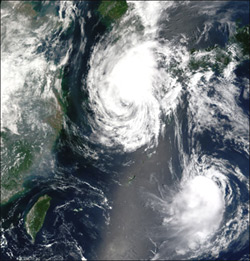
|
Carbon dioxide rate is at highest level for 650,000 yearsSteve Connor, Science Editor
|
 |
 UN delivers definitive warning on dangers of climate change
UN delivers definitive warning on dangers of climate change